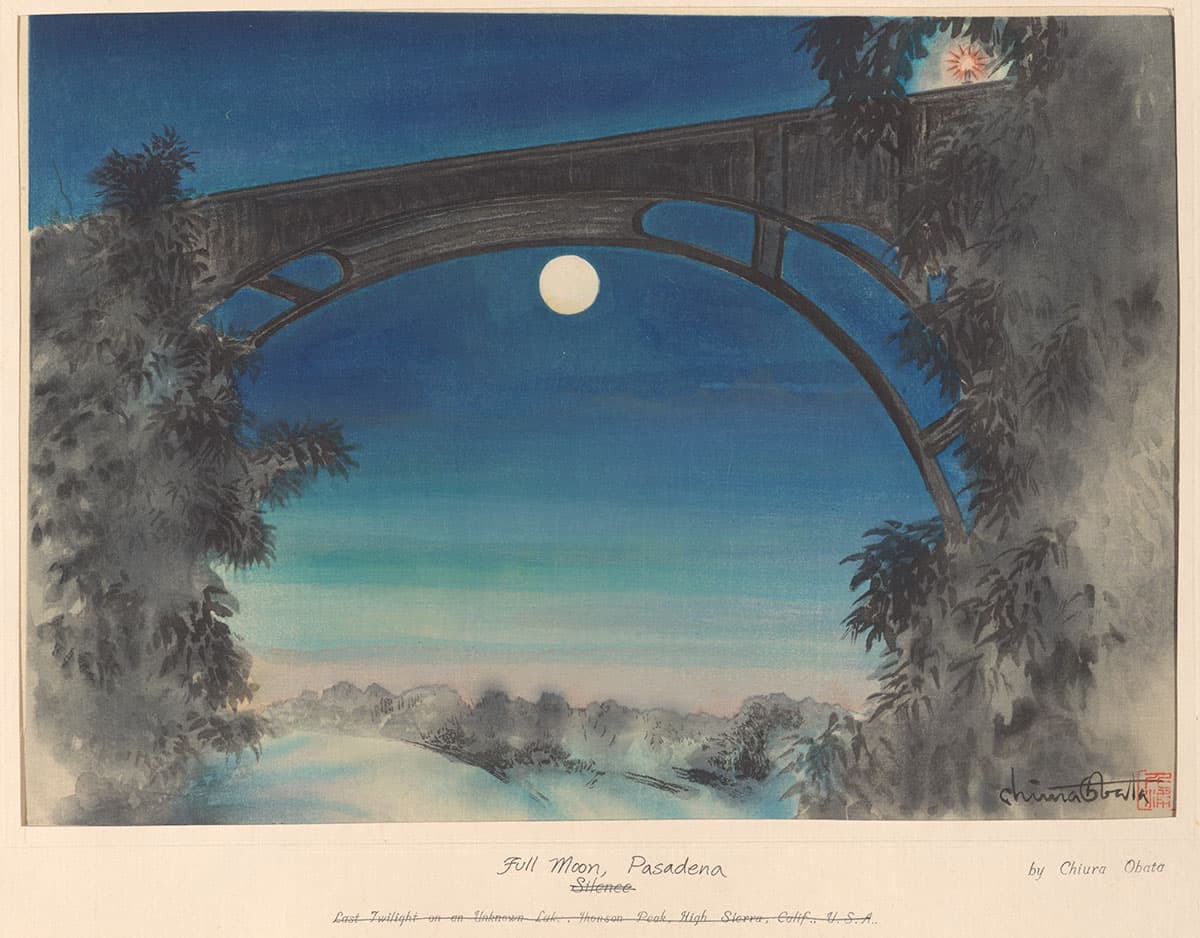Life’s “Continual Vibrations”: Asian American Artists and the Natural World

Wed., April 30, 2025, 7:30–8:30 p.m.
Free with reservation
Education and Visitor Center, Rothenberg Hall
In the first half of the 20th century, Chinese American and Japanese American artists struggled with experiences of racism and estrangement but found inspiration and bridges to belonging in the natural world. Nayan Shah’s presentation explores how Asian American artists hiked and camped in the mountains and seashores. This sensory immersion in nature shaped their artistic experiments, aesthetics, and the stories of their lives.
The lecture explores the creative experiments that arose from Chiura Obata’s immersion in the High Sierra of Northern California, Dong Kingman’s watercolor paintings in Yosemite Valley, Yasuo Kuniyoshi’s drawings and paintings of Maine farms and seashores, and George Masa’s photography and trail mapping of the Great Smokey Mountains.
The sense of belonging these artists cultivated in the places they visited resonated through the spiritual and humane values they expressed in both their relationships and their art.
This is the Los Angeles Times Distinguished Fellow Lecture.
About the Speaker
Nayan Shah is professor of American studies & ethnicity and history at USC. He is a historian whose books uncover how people struggle with migration, illness, incarceration, and belonging in the United States and across the globe. He is the author of two award-winning books on Asian American experience: Contagious Divides: Epidemics and Race in San Francisco’s Chinatown (California, 2001) and Stranger Intimacy: Contesting Race, Sexuality, and the Law in the North American West (2012). His latest book, Refusal to Eat: A Century of Prison Hunger Strikes (2022), is the first global history of hunger strikes as a tactic in prisons, conflicts, and protest movements. He is working on a new project about migration and artmaking, which examines how Asian diasporic artists forge relationships of belonging, refuge, and vulnerability in the natural world. He is featured in the PBS documentaries Asian Americans (2020) and Plague at the Golden Gate (2022). He has worked with the National Park Service, Angel Island Foundation, California Historical Society, and Smithsonian Institution to interpret Asian American past and present. He is an Organization of American Historians Distinguished Lecturer and a Society of American Historians member. He serves on the board of Los Angeles’ East West Players, the nation’s longest-running Asian American theater.

Chiura Obata (American, 1885–1975), Full Moon, Pasadena, CA, 1930. Ink on paper, image: 10 15/16 × 15 3/8 in. (27.8 × 39.1 cm), sheet: 13 1/8 × 17 13/16 in. (33.3 × 45.2 cm). | The Huntington Library, Art Museum, and Botanical Gardens. Gift of the Obata Family.